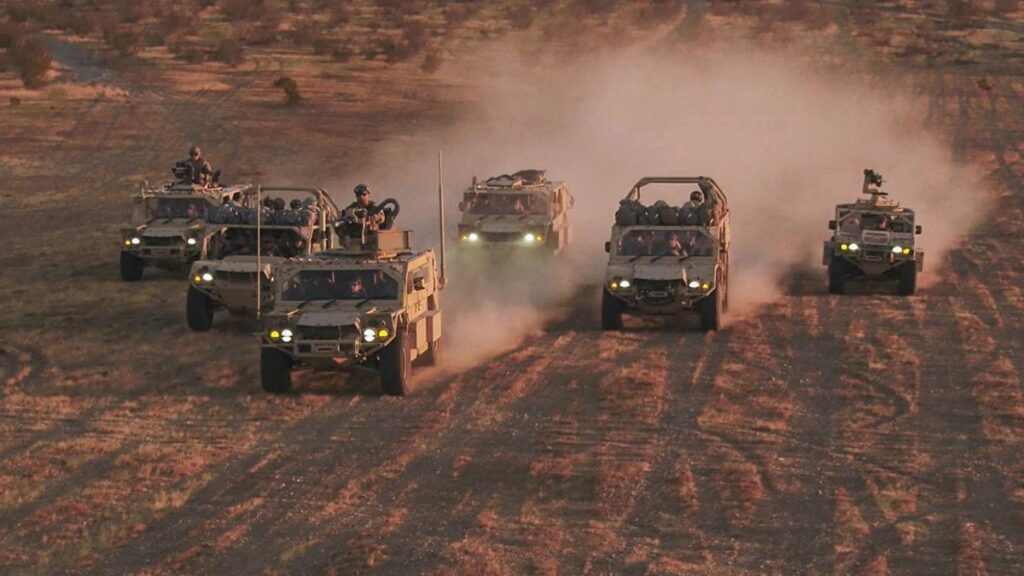In a world where the demand for energy efficiency and sustainability is increasing, the question arises: when will the Army fully embrace hybrid-electric vehicles? With the potential for reduced fuel consumption and carbon emissions, the integration of these innovative technologies into military operations could revolutionize the way our armed forces operate. Join us as we explore the possibilities and challenges of implementing hybrid-electric vehicles in the Army.
– Challenges of integrating hybrid-electric vehicles into Army operations
Hybrid-electric vehicles offer a promising solution for reducing the Army’s carbon footprint and increasing fuel efficiency in its operations. However, integrating these vehicles into Army operations comes with its own set of challenges. One of the main obstacles is the significant upfront cost of acquiring hybrid-electric vehicles compared to traditional gasoline-powered vehicles. This initial investment may deter decision-makers from embracing this new technology.
Moreover, there is a lack of infrastructure to support widespread use of hybrid-electric vehicles within the Army. Charging stations would need to be installed at military bases and training facilities to ensure that these vehicles can be recharged efficiently. Additionally, maintenance personnel would need to be trained to handle the unique requirements of hybrid-electric vehicle maintenance. Embracing hybrid-electric vehicles requires a shift in mindset and investment in infrastructure, but the long-term benefits for the environment and operational efficiency make it a worthwhile endeavor.
– Benefits of hybrid-electric vehicles for military use
Hybrid-electric vehicles offer a wide range of benefits for military use, making them a promising option for the Army to embrace in the near future. These vehicles combine traditional internal combustion engines with electric propulsion systems, providing a unique set of advantages for military applications. Some of the key benefits include:
- Increased fuel efficiency: Hybrid-electric vehicles can significantly reduce fuel consumption, saving the military money and reducing dependence on fossil fuels.
- Stealth capabilities: Electric propulsion systems offer quieter operation, making hybrid-electric vehicles ideal for stealth missions where noise reduction is critical.
- Enhanced performance: Electric motors provide instant torque, improving acceleration and overall performance on the battlefield.
In addition to these benefits, hybrid-electric vehicles are also more environmentally friendly, producing lower emissions compared to traditional gasoline or diesel-powered vehicles. With advancements in technology and the proven success of hybrid-electric vehicles in civilian applications, it’s only a matter of time before the Army fully embraces this innovative and efficient transportation solution.
| Benefit | Description |
|---|---|
| Increased fuel efficiency | Reduces fuel consumption and saves money |
| Stealth capabilities | Offers quieter operation for stealth missions |
| Enhanced performance | Provides instant torque for improved acceleration |
– Recommendations for the Army to adopt hybrid-electric vehicles
Hybrid-electric vehicles offer a promising solution for the Army to reduce its reliance on traditional fuel sources and decrease its carbon footprint. By incorporating these vehicles into their fleet, the Army can benefit from increased fuel efficiency and reduced emissions, ultimately saving costs and contributing to a more sustainable operation.
With advancements in technology and the availability of hybrid-electric vehicles on the market, there is no better time for the Army to make the switch. Embracing these vehicles not only aligns with global efforts towards environmental conservation, but also positions the Army as a forward-thinking and innovative organization ready to embrace change. The time is now for the Army to adopt hybrid-electric vehicles and lead the way towards a greener future.
– Overcoming obstacles to widespread deployment of hybrid-electric vehicles in the military
Despite the growing popularity of hybrid-electric vehicles in the civilian sector, the military has been slow to fully embrace this technology. One of the main obstacles to widespread deployment of hybrid-electric vehicles in the military is the upfront costs associated with transitioning the current fleet. The Army must allocate funding to purchase new hybrid-electric vehicles and retrofit existing vehicles, which can be a significant financial burden.
Another challenge is the limited infrastructure to support hybrid-electric vehicles on military bases and during deployments. The lack of charging stations and maintenance facilities can hinder the practicality of incorporating hybrid-electric vehicles into military operations. Additionally, concerns about the reliability and durability of hybrid-electric technology in demanding combat situations have also contributed to the slow adoption rate within the military. the Army must address these obstacles in order to fully realize the potential benefits of hybrid-electric vehicles in enhancing operational efficiency and reducing environmental impact.
Wrapping Up
As we look towards the future of military technology, one question remains unanswered – when will the Army fully embrace hybrid-electric vehicles? With the potential for increased sustainability and efficiency, the integration of these vehicles could revolutionize the way our military operates. Only time will tell when this shift will occur, but one thing is for certain – the Army’s adoption of hybrid-electric vehicles could pave the way for a more sustainable and innovative future on the battlefield. Stay tuned as we continue to monitor the progress of this exciting development.

